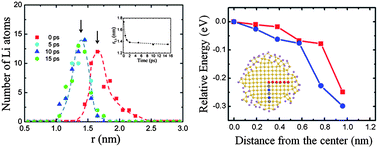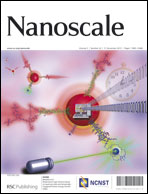Self-stopping effects of lithium penetration into silicon nanowires
Abstract
Using first-principles molecular dynamics simulations, we demonstrate that the penetration of lithium atoms into a silicon nanowire (SiNW) self-stops once a metallic amorphous Li–Si shell forms. This explains the extended life of crystalline Si cores in SiNW battery electrodes observed in experiments. Metallic Li–Si shells grasp Li atoms and prohibit them from directly segregating through interstitial channels toward the crystalline center of SiNWs. Meanwhile, high pressure develops on the core as it shrinks, due to the expansion and tension in the amorphous shell, which eventually frustrate the step-forward amorphization. We also elucidate the reasons why H-passivated SiNWs are not suitable for studies of lithiation processes.


 Please wait while we load your content...
Please wait while we load your content...